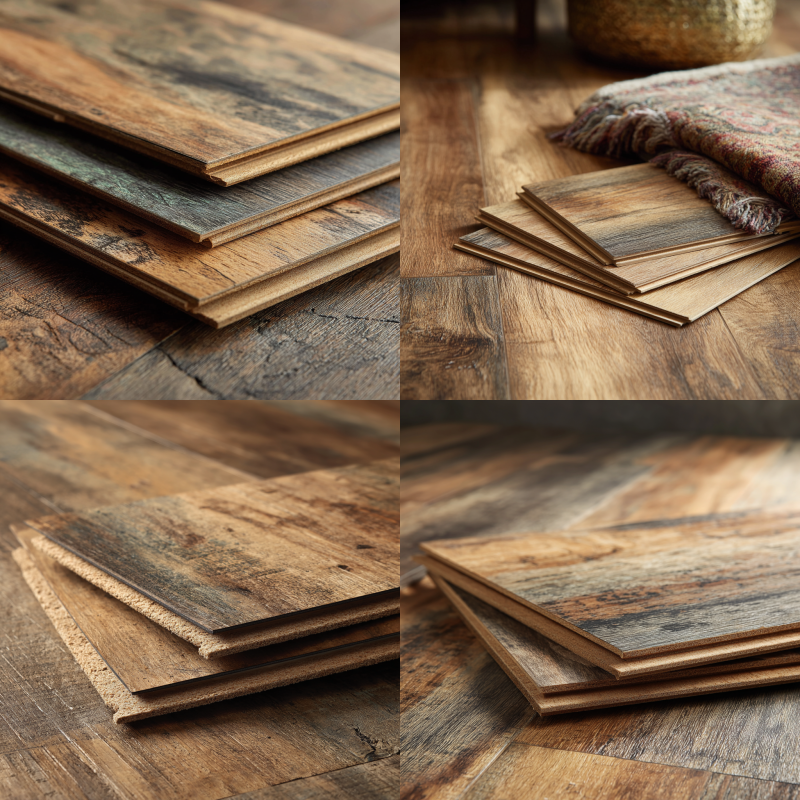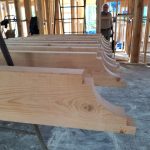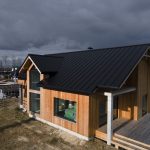
The Truth About What Is Laminate Flooring and Its Durability
What Is Laminate Flooring? A Stylish, Low-Maintenance Alternative to Hardwood
Wondering what is laminate flooring? Discover how this budget-friendly, durable material can replicate hardwood or stone, offering stylish looks with easy care for busy homes.
Laminate flooring might just be the answer when you want beautiful floors without the hefty expense or upkeep of natural hardwood or tile. You get a sleek, modern look that can stand up to kids, pets, and everyday living. Below, you will learn exactly how laminate floors are constructed, what makes them durable, and how to care for them long-term.
Explore what is laminate flooring
Laminate flooring is a synthetic product composed of several layers of compressed materials. It usually contains:
- A high-density fiberboard (HDF) or medium-density fiberboard (MDF) core that gives it structure.
- A printed design layer that recreates the look of wood, stone, or ceramic.
- A protective wear layer (often melamine resin) that resists fading, scratches, and stains.
Contrary to what some believe, laminate is not plastic. Instead, it uses wood fibers bonded with resins under high heat and pressure to form a stable, relatively thick plank. Thanks to modern printing techniques, you will find a wide array of textures and finishes. Many of these textures resemble popular hardwood species such as oak, hickory, and even exotic options like mahogany. These wood-look laminate designs allow you to match your personal style affordably.
Research shows that laminate flooring now comes in styles that mimic stone or ceramic tile as well. Manufacturers can even add realistic embossed textures or hand-scraped effects to bring an authentic feel underfoot. If you want a deeper dive into other popular flooring options, check out types of flooring installation materials for a broad overview.
Find the best laminate styles
Laminate flooring offers a wide range of colors and plank sizes. Wide planks create a rustic or modern feel, while narrow strips give a classic look—one reason homeowners often choose laminate over costlier materials.
When picking a color, think about how it affects your space. Light shades can open up a room, while darker tones add warmth. Levis4Floors notes that light colors make small areas feel bigger, and dark ones create coziness. Consider contrast with furniture—matching everything can look flat, so mixing tones adds depth.
Laminate comes in planks that mimic wood and squares that resemble tile or stone. Some options include real wood veneers, offering a hardwood look at a lower cost. If you’re exploring real-wood alternatives, check out engineered hardwood flooring for comparison.
Look at durability factors
One of the biggest selling points for laminate flooring is its toughness. Many premium brands carry an AC4 rating, which signifies commercial-level durability. In a busy household, this can be a game-changer. Here is why laminate holds up so well:
- The topmost wear layer resists everyday scratches and scuffs.
- Laminates can endure contact with water better than hardwood, especially if labeled “waterproof.”
- Finished surfaces are less prone to fading in sunlight.
According to industry sources, most laminate floors can last up to 20 years with proper care. That said, hardwood can be refinished multiple times, so genuine wood can outlive laminate in the long run. Still, when you want a budget-friendly, long-lasting surface, laminate often offers the best balance of price, looks, and wear-resistance.
Handling everyday stress
If you have children racing toy cars across the floor or pets with sharp nails, you know that everyday stress can do a number on surfaces. Good news, laminate’s protective layers tend to stand up quite well. High-density fiberboard cores add stability and help minimize dents. In fact, many laminate products today provide a sturdy foundation capable of handling high foot traffic.
Waterproof or water-resistant options
Some leading brands now offer laminates marketed as fully waterproof. This can include special sealer technology in the joints. If you are installing laminate in a kitchen or bathroom, look for planks specifically rated for moisture resistance. Do be aware, however, that significant water exposure over time might still lead to swelling. Always follow the manufacturer’s care guidelines to protect your floor.
Install and maintain easily
You might be happy to hear that laminate flooring installation can be a manageable DIY project. Many varieties come with a click-lock system that snaps together without glue or nails. There are four main types to know:
- Glueless laminate
- Laminate with attached underlay
- Glued laminate
- Pre-glued laminate
Pre-glued laminate arrives with adhesive already on the tongue-and-groove edges, cutting down installation steps. If you want a deeper look at how to prepare a subfloor, visit flooring pre-installation preparation to ensure your foundation is ready for the new boards.
Subfloor and underlayment
Most laminate floors need a thin underlayment to help seal out moisture and provide slight cushioning. An even and dry subfloor is crucial, so clean and level it before rolling out the underlayment. If you have never tackled a flooring project, consulting a professional installer ensures fewer headaches down the road.
Moldings and transitions
Whether you have carpet in an adjacent room or a stair nose you need to handle, specialized trim pieces help create a neat, finished look. Covering the expansion gap around the room’s perimeter with quarter round or transitions will allow the laminate to move naturally with temperature changes. Request samples of these moldings in advance to avoid surprises on installation day.
Routine cleaning
Maintaining laminate is straightforward. Most of the time, a damp microfiber mop or a vacuum works fine. Spills should be wiped promptly, especially on standard water-resistant laminate. To extend your floor’s life, avoid excessively wet mopping. If you want more suggestions after your floors are installed, check out how to clean floors after installation for a few extra tips.
What is laminate flooring for you
Laminate flooring offers the look of wood or stone without the high cost or upkeep. Modern styles are more realistic and practical than ever, with water-resistant and waterproof options making them suitable even for kitchens and bathrooms.
It’s a smart choice that combines style, durability, and affordability. With proper prep, a matching design, and attention to moisture guidelines, laminate can handle daily wear for up to 20 years—delivering a low-maintenance, polished look throughout your home.
Ready to Transform Your Home?
At Mazzamuto Construction, we believe great spaces start with thoughtful planning and skilled craftsmanship. Whether you’re exploring ideas or ready to build, our team is here to guide you every step of the way. Let’s bring your vision home—reach out for a personalized consultation today!
Frequently asked questions
1. What are the different types of flooring materials?
Common flooring types include hardwood, engineered wood, laminate, vinyl, tile, carpet, and concrete. Each has pros and cons based on cost, durability, moisture resistance, and style. For example, tile works well in wet areas, while hardwood adds timeless appeal to living spaces.
2. What is engineered hardwood flooring?
Engineered hardwood is made from a real wood veneer on top of multiple layers of plywood or fiberboard. It looks like solid hardwood but is more stable in humid or variable climates, making it a great choice for basements or over concrete slabs.
3. What is laminate flooring?
Laminate flooring is a synthetic product made of multiple layers, including a high-resolution image layer that mimics wood, stone, or tile. It’s known for being affordable, durable, and low-maintenance, making it ideal for high-traffic or budget-conscious households.
4. Will my floor look fake because of repeated patterns?
Most laminate floors repeat a design pattern every few planks. Modern printing technology has improved authenticity, but if you look carefully, you might notice repeats. Strategic plank placement can help minimize this effect.
5. Can laminate be used on walls?
It is becoming trendy to install laminate on walls to create an accent feature. That said, many manufacturers do not warranty this application, so always check with your brand before proceeding.
6. How does laminate hold up against pets?
Most laminate has a tough wear layer that resists scratches from pet claws. If you have particularly active animals, consider a higher AC rating (like AC4) designed for heavy household use.
7. What is the cost range for laminate flooring?
Costs vary by brand and quality but often land around $4 to $6 per square foot. This makes laminate a very budget-friendly alternative to traditional hardwood.
Key takeaways
- Laminate flooring is made from compressed wood fibers with a printed image layer and a wear-resistant top.
- Styles include wood-look, stone-look, and tile-look, offering wide design flexibility.
- Waterproof or water-resistant laminates expand potential usage in kitchens and bathrooms.
- Most laminates feature simple click-lock installation, but proper subfloor prep is essential.
- With routine cleaning and a protective top layer, laminate can last up to 20 years in busy homes.




